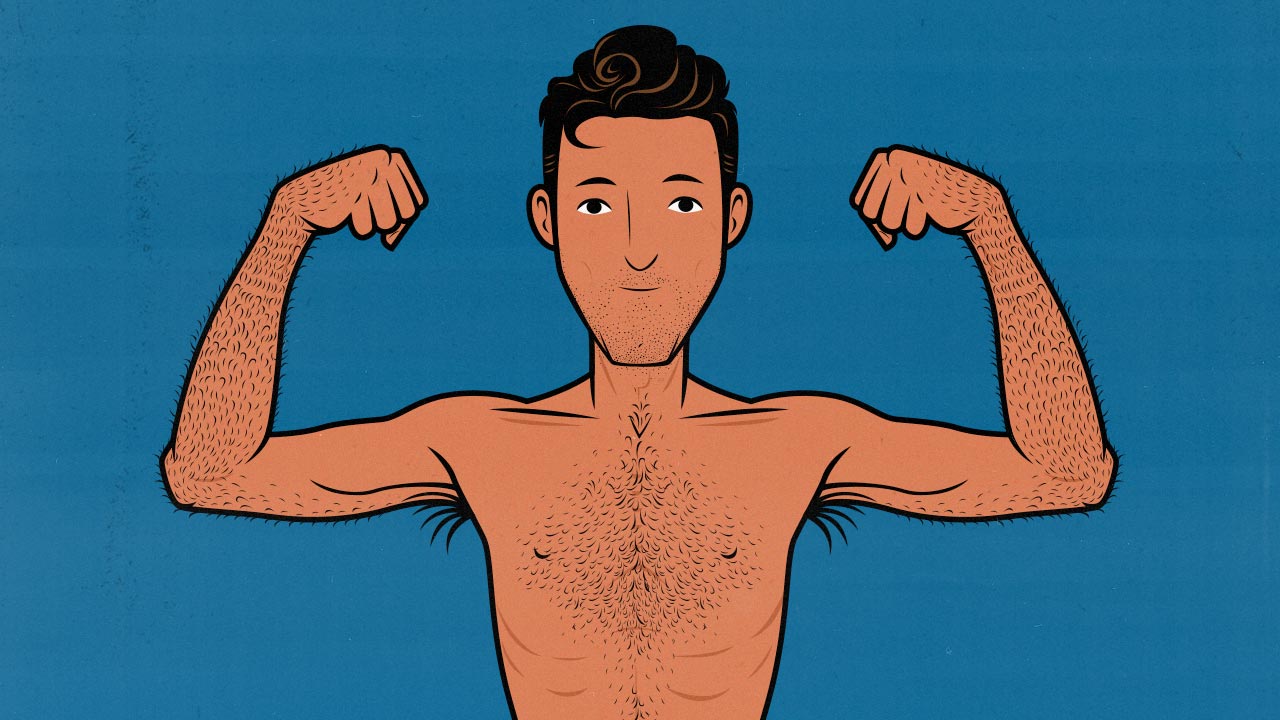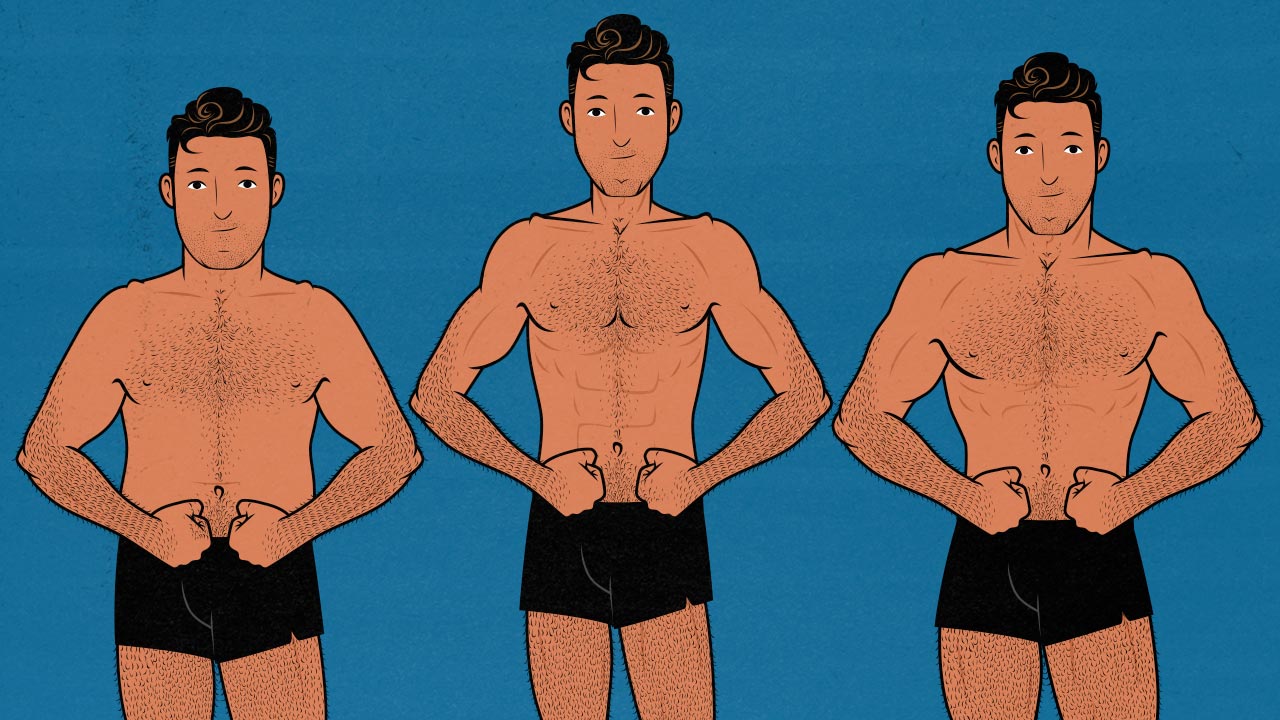Genetics
Do Skinny People Have Faster Metabolisms?
There’s a common myth in the fitness industry that skinny people don’t have faster metabolisms, they just don’t eat as much food. According to this line of thinking, there’s no such thing as a fast or slow metabolism. Rather, your metabolism is determined by your height, age, weight, lean mass, exercise habits, and activity levels. There are two problems with this line of thinking.
First, those variables can result in huge changes in metabolic rate. For example, in a study published by Science, they found that a 180-pound person could burn anywhere from 1,400 to 5,700 calories per day (study).
Second, even if you account for every single one of those variables, metabolisms can still vary greatly between people. Even when living totally average lifestyles, naturally skinny people often have unusually fast metabolisms.
Let’s go over the research and implications. Then we can talk about how to gain weight and build muscle with a fast metabolism.
Read MoreThe Grey Truth About Skinny Muscle-Building Genetics
There’s a war raging in the natural muscle-building community. The white warriors are fed up with nihilistic blackpill hardgainers who give up on building muscle before they even start. They argue we should set lofty goals and fight to accomplish them, genetics be damned. After all, they started off skinny, too. They worked hard, gritted their teeth through the struggle, and succeeded to such a tremendous extent that they became famous for their physiques.
The dark doomers argue that those with the best muscle-building genetics are the most likely to rise to the top of the fitness industry. These hypertrophy gurus stand there on their genetic pulpits and preach the value of willpower, determination, and discipline, ignoring the fact that their genetics are what allowed their hard work to bear such impressive fruits. Only a very small fraction of their audiences will see that same degree of success, leaving the rest feeling dysmorphic and disillusioned.
There’s truth on both sides. No matter how thin we start, no matter how slender our bone structures are, and no matter if our hardgainer metabolisms incinerate nine-tenths of our calorie surpluses, we can still build muscle. If we progressively overload our lifts, eat enough food, and cleverly adjust based on the progress we’re making, we’ll get results.
But our genetics do indeed influence those results. Even among naturally skinny dudes, we all have different bone structures, different muscles that lag behind, and different muscles that pull ahead, causing us to build bodies that look rather different from one another.
I think it’s important to talk honestly about genetics. Not in an overly pessimistic “blackpill” way. It’s true that everyone can bulk up. But not in an overly optimistic “whitepill” way, either. We all have genetic weaknesses that we need to account for and genetic strong points we can leverage.
Read MoreAre You a Non-Responder to Weight Training?
There’s no doubt that genetics play a role in building muscle. In fact, especially when looking at outliers, genetics can have an enormous impact. If two people do the same workout routine and eat the same bulking diet, one of those people might gain twice as much muscle.
What’s more contentious is the claim that some people can’t build muscle at all. And there’s some truth to that idea. When most people start lifting weights, they build muscle. But not everyone. And these people who don’t gain muscle have been referred to as “non-responders” or “low-responders” in the research.
So what’s going on here? Weight training is supposed to cause us to adapt by gaining muscle size and strength. Why do some people fail to adapt?
Read MoreWhat’s an Ectomorph Body Type? Is it Even Real?
Is “ectomorph” a real body type? Is it an accurate way to describe a naturally skinny person with a tall, narrow build? It’s a controversial word, and over the past ten years, we’ve gotten our share of flack for using it. I understand why. The body types have a dark past.
Is it a useful term? We’re naturally skinny guys with a decade of experience helping thousands of other skinny guys build muscle. Many of us describe ourselves as ectomorphs. It’s a convenient way to refer to our narrower frames and thinner bones. Should we stop describing ourselves that way?
Let’s delve into ectomorph etymology to see if there’s anything worth salvaging here.
Read MoreThe Skinny Guy’s Guide to Building a Hollywood Physique
In this article, I want to talk about realistic physique goals, both in terms of understanding the timeframe that it takes to build muscle, as well as how good you can expect to look by the end of it. Perhaps it’s our audience, being largely made up of skinny guys who actively seek out information, but we tend to see things differently than a lot of other fitness professionals.
Can you look like the sex icon from the latest Hollywood movie? Well, you can’t transform your face, and building muscle won’t automatically make you more charismatic, but can you have physique of Brad Pitt from Fight Club, Christian Bale in American Psycho, Will Smith in I Am Legend, Gerard Butler in 300, or Daniel Craig in James Bond? Yes, you probably can.
None of those actors have great muscle-building genetics. All of them are naturally skinny—so-called ectomorphs. Some of them are naturally lean, yes, but so are many of us. And believe it or not, most of them didn’t even routinely lift weights until a few months before shooting for those films. These aren’t just realistic physiques, these are physiques you can probably build with just a few months of dedicated weight training.
I realize this might sound crazy, but hear me out.
Read MoreThe Male Body Types: Ectomorph, Endomorph, Mesomorph
In bodybuilding and fitness communities, people commonly use the terms endomorph, mesomorph, and ectomorph when talking about male body types. Endomorphs are purportedly stockier and chubbier, mesomorphs are said to be broader and more muscular, and ectomorphs are supposedly thinner and leaner.
Or that’s what people say, anyway. Men do have varying heights and bone structures, and have different propensities for being overweight or underweight, but do these traits really combine together to form three distinct body types? Is it correct to call a naturally skinny guy an ectomorph?
And even if we do use these slang terms to sort people into different body types, do the different body types benefit from different diets and workouts? For example, is there such a thing as an ectomorph workout or an ectomorph bulking diet? Or do all body types benefit from the same workouts, diets, and lifestyles?
Read MoreHow to Know If You’re an Ectomorph
Most of us ectomorphs describe ourselves as being naturally skinny and we tend to have a hard time gaining weight. More specifically, though, ectomorphs are usually defined by having narrower shoulders, lankier longer limbs, thinner bones, and a lower body-fat percentage. Being an ectomorph is also associated with having a higher metabolism and a smaller stomach.
If you’re curious about whether you’re an ectomorph or not, there are a few simple tests that you can do. All you need to do is measure the width of your frame, the thickness of your wrists, and the length of your muscle bellies. You can do it at home in just a couple of minutes.
We’ll also cover how the various ectomorph traits affect our ability to build muscle, what our genetic muscular potential is, and how we should approach bulking up.
Dive In






